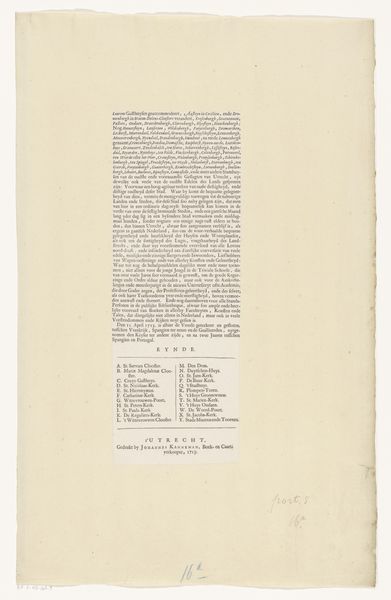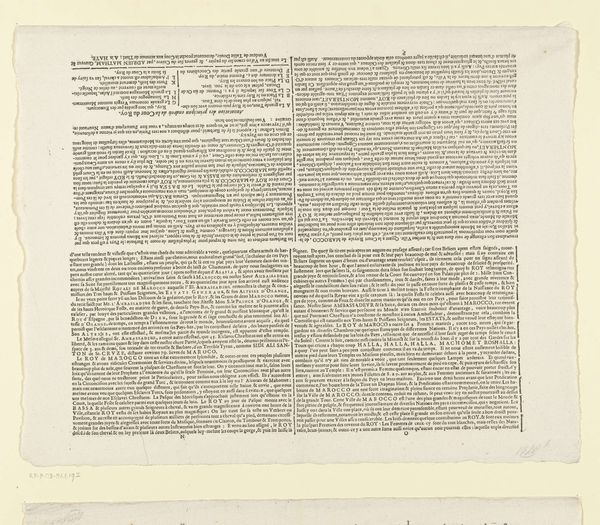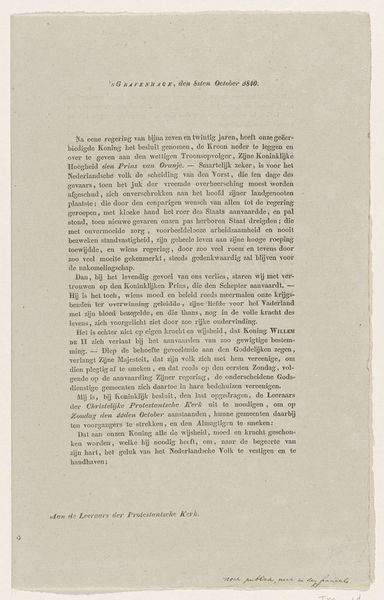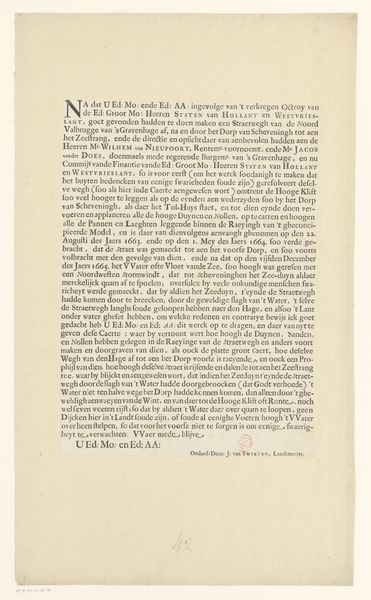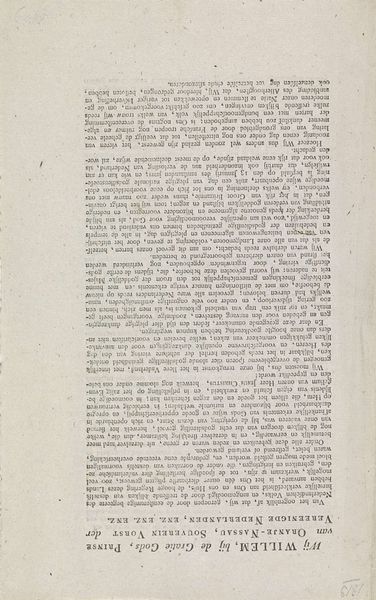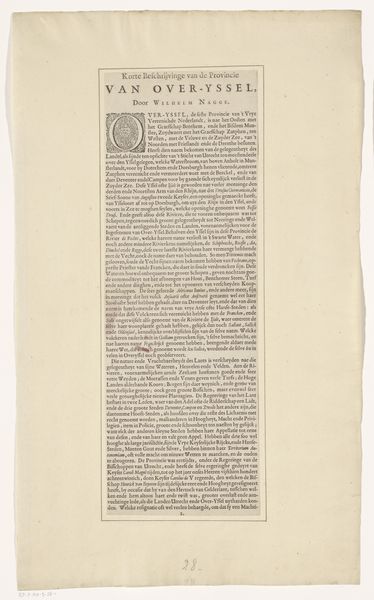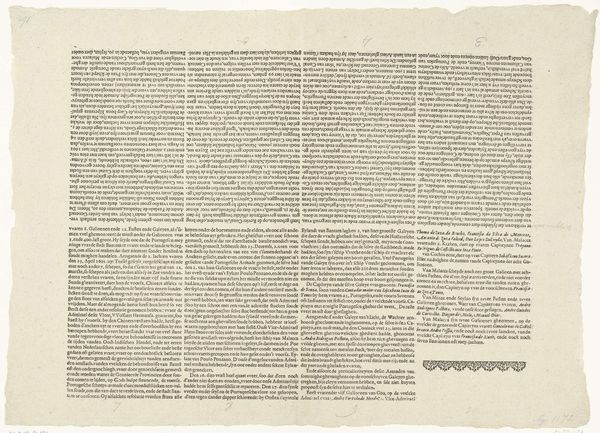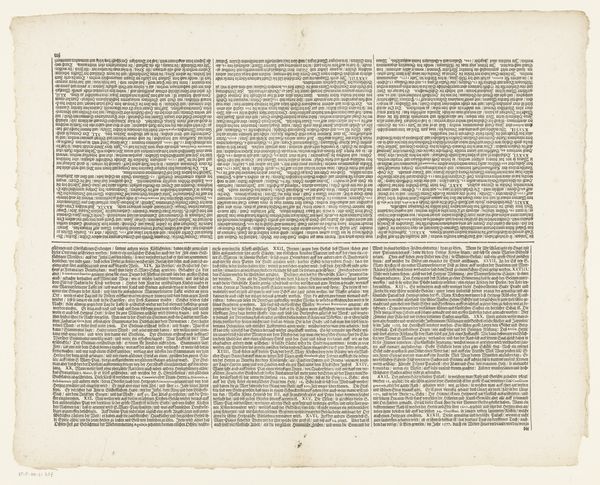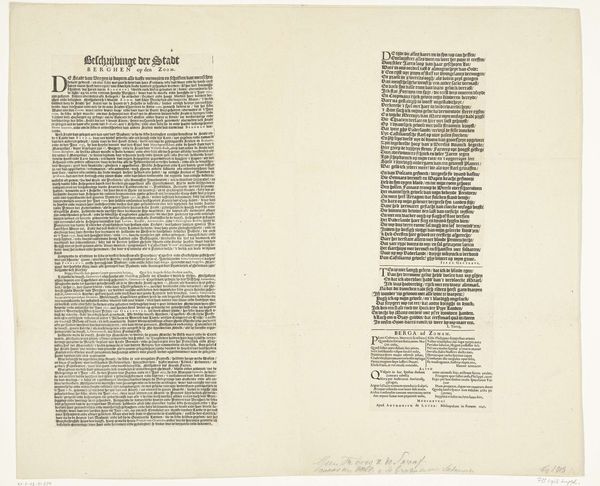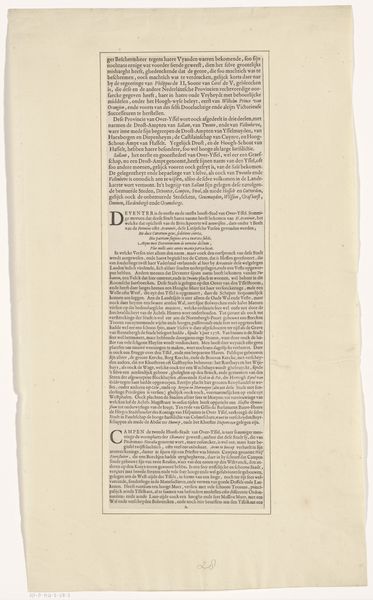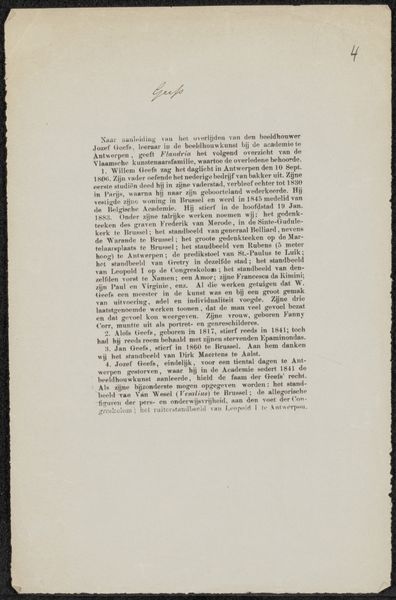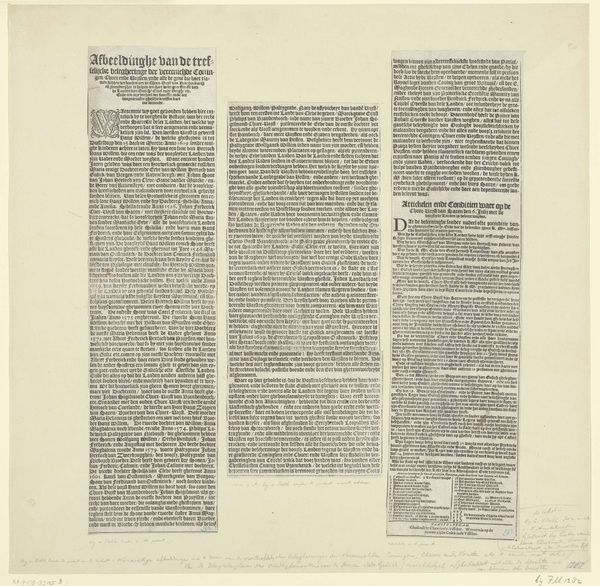
Krantenknipsel over de viering van het tweehonderdjarig bestaan van het Seminarium van Remonstranten, 1834 Possibly 1834
0:00
0:00
print, textile, paper, typography
# print
#
textile
#
paper
#
typography
Dimensions: height 185 mm, width 115 mm
Copyright: Rijks Museum: Open Domain
Curator: We're looking at a newspaper clipping today, titled "Krantenknipsel over de viering van het tweehonderdjarig bestaan van het Seminarium van Remonstranten, 1834," or roughly translated, "Newspaper clipping about the celebration of the bicentennial of the Remonstrant Seminary, 1834." Editor: My first impression is one of dense, almost claustrophobic, text. The tight kerning and letterforms create a visually heavy field, relieved only slightly by the aged paper it's printed on. It evokes a feeling of history, yet its legibility presents a challenge. Curator: Indeed. Let's delve into its construction. The print employs typography on paper, likely with textile elements involved in the paper-making process itself. Given its probable production date around 1834, this piece reflects a moment where printed media began to disseminate information widely. Editor: For me, the fascination lies in understanding the material processes. We see a confluence of labor involved – from the papermakers crafting the substrate, to the typesetters meticulously arranging the text, to the press operators pulling each impression. This labor echoes in every character and line. Curator: From a formalist perspective, I am captivated by the structured arrangement of the text. The hierarchy and deliberate organization reflects rationalism of the time. Moreover, note how its composition follows principles akin to architectural design—balance and proportion guide your eye across this information-dense plane. Editor: Precisely. And beyond that initial construction, think about this artifact within a broader ecology of its usage: how did individuals interact directly with it? Who owned and what was consumed inside those materials by ordinary folk. I also like thinking of the way the typography renders each little line; the effect comes through physical engagement within industrial processes, an effect no different than those made using more classic high artistic material engagements Curator: A fitting point. In its creation of space with line spacing and character form alone, what statements do you find most arresting for that context in printing history within the broader discourse from your perspective versus now concerning information's visual presence historically ? Editor: In summary, through focusing on those labor's engagements combined during its initial context when seen by people originally during period production runs can uncover valuable understanding and even hidden value compared against typical readings only relying entirely formalism alone regarding context such what this means! Curator: Certainly, I recognize within myself my enhanced perceptions on it beyond the initial ones regarding context with these newly found points added regarding its complex industrial process to disseminate text visually.
Comments
No comments
Be the first to comment and join the conversation on the ultimate creative platform.

